Supernova in the Pinwheel Galaxy. Supernova 2023ixf, in M101 off the Big Dipper, is still in view of amateur telescopes. It's fading slowly; as of July 3rd it was magnitude 12.0, down from its May 25th peak of 11.1. It's also slightly "reddening" — actually, yellowing.
Supernovae usually stay bright for weeks — sometimes with surprise variations, though this one has shown none yet. See Bright Supernova Blazes in M101, the Pinwheel Galaxy, with charts and comparison magnitudes.
FRIDAY, JUNE 30
■ The Moon shines among the stars of upper Scorpius. The brightest of these is orange Antares about 2° or 3° to the Moon's lower left (for North America). Next brightest is Delta Scorpii, farther to the Moon's upper right. Binoculars help through the moonlight and summer haze.
■ Mars and Venus are now at their minimum separation for this apparition, 3.6° apart, as shown below. Mars will remain in low twilight view for more than a month to come. Venus will drop away faster.
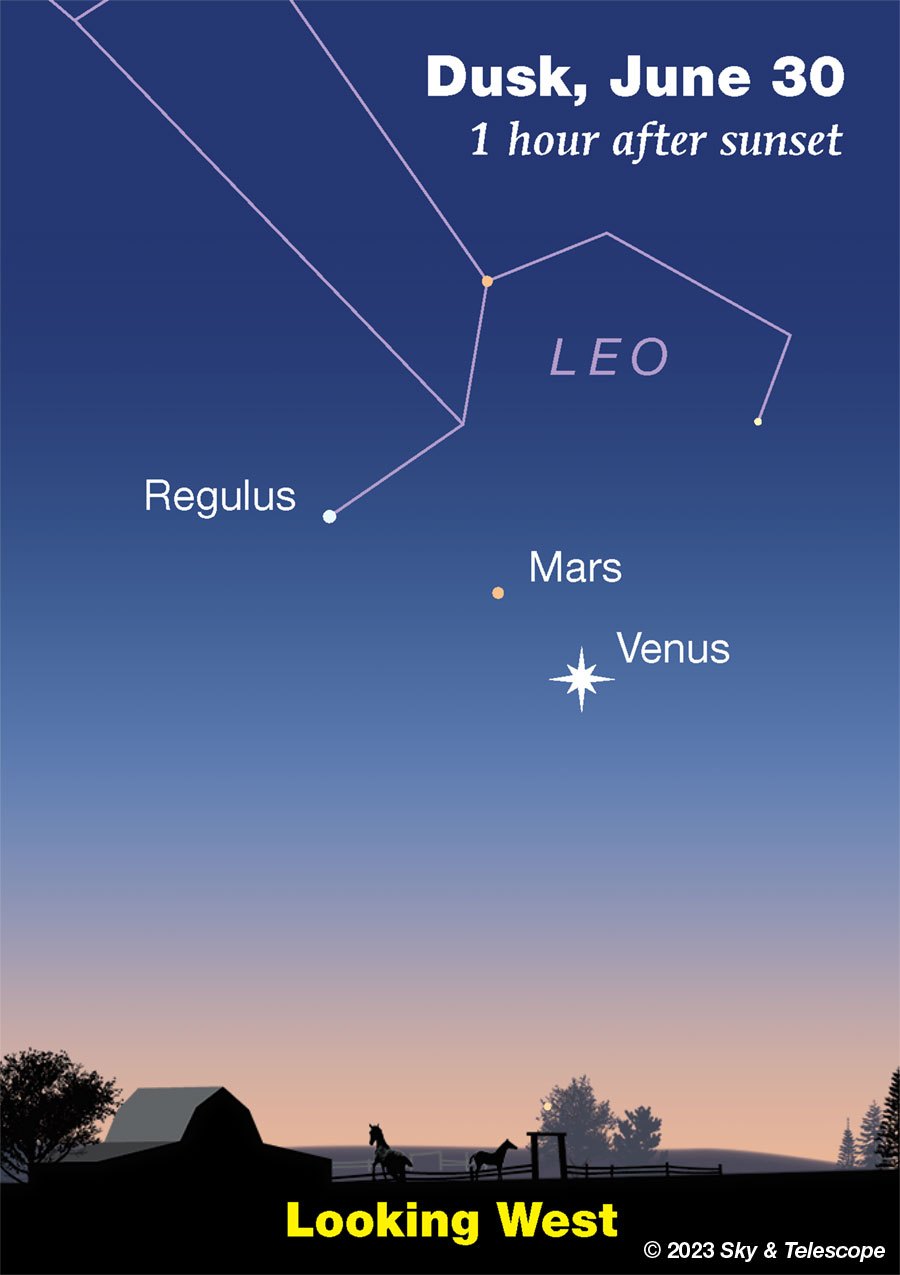
Whenever Mars moves into the same general part of the sky as vivid Venus, Mars dwindles into a puny, pathetic little thing. Why does this always happen?
It's because 1) Venus is an inner planet, so we can never see it very far from the Sun in our sky, and 2) Mars is an outer planet, so when we see it anywhere near Venus — i.e. not very far from the Sun — it's on the far side of its orbit from us on the other side of the Sun, nearly as distant as it can ever get.
SATURDAY, JULY 1
■ Now the Moon shines midway between upper Scorpius to its west and the Sagittarius Teapot to its east.
■ To casual starwatchers or those with an obstructed northern view, Cassiopeia in July may sound as wrong as Christmas in July. But already Cas has passed its lowest evening position of the year and is gradually gaining altitude in preparation for the coming fall and winter. Look for its flattened W shape low in the north-northeast and no longer quite so level.
SUNDAY, JULY 2
■ Full Moon tonight (exactly full at 7:39 a.m. Monday morning EDT). The Moon shines inside the Sagittarius Teapot this evening for North America. Use binoculars to piece out the Teapot through the moonlight. Note: The Teapot is about twice the width of a typical binocular's field of view, so expect to sweep around a bit to find it all.
MONDAY, JULY 3
■ Different people have an easier or harder time seeing star colors, especially subtle ones. To me, the tints of bright stars show a little better on a bright sky background than a dark one.
For instance, the two brightest stars of summer are Vega, very high now in the east at dusk, and Arcturus, very high in the southwest. Vega is white with just a touch of icy blue. Arcturus is a yellow-orange giant. Do their colors stand out a little better for you against the deep blue of late twilight? How about against the colorless gray of the moonlight after dark?
Binoculars, of course, always make star colors much easier.
TUESDAY, JULY 4
■ Low in the north-northeast after dark, the upright W of Cassiopeia is slowly beginning to tilt and climb. Cassiopeia is supposed to represent an ancient queen of Ethiopia, or maybe her chair. Above her is the house-shaped constellation pattern of her dimmer husband, King Cepheus. Or maybe that's his blocky head in profile. See the evening constellation map in the July Sky & Telescope. Turn the map around so its "Facing NE" horizon is down.
WEDNESDAY JULY 5
■ We now get a brief window of moonless dark between the end of twilight and moonrise roughly a half hour later (depending on your location). Use it to see how well you can trace out the huge arch of the Milky Way looming up across the eastern half of the sky. It runs from the spout of the Sagittarius Teapot in the south-southeast, upper left to cross the bottom of the Summer Triangle high in the east, then down to Cassiopeia and Perseus in the north-northeast.
THURSDAY, JULY 6
■ The waning Moon rises just a few degrees below Saturn late tonight. They're high in the south as dawn begins in the sky of Friday morning the 7th.
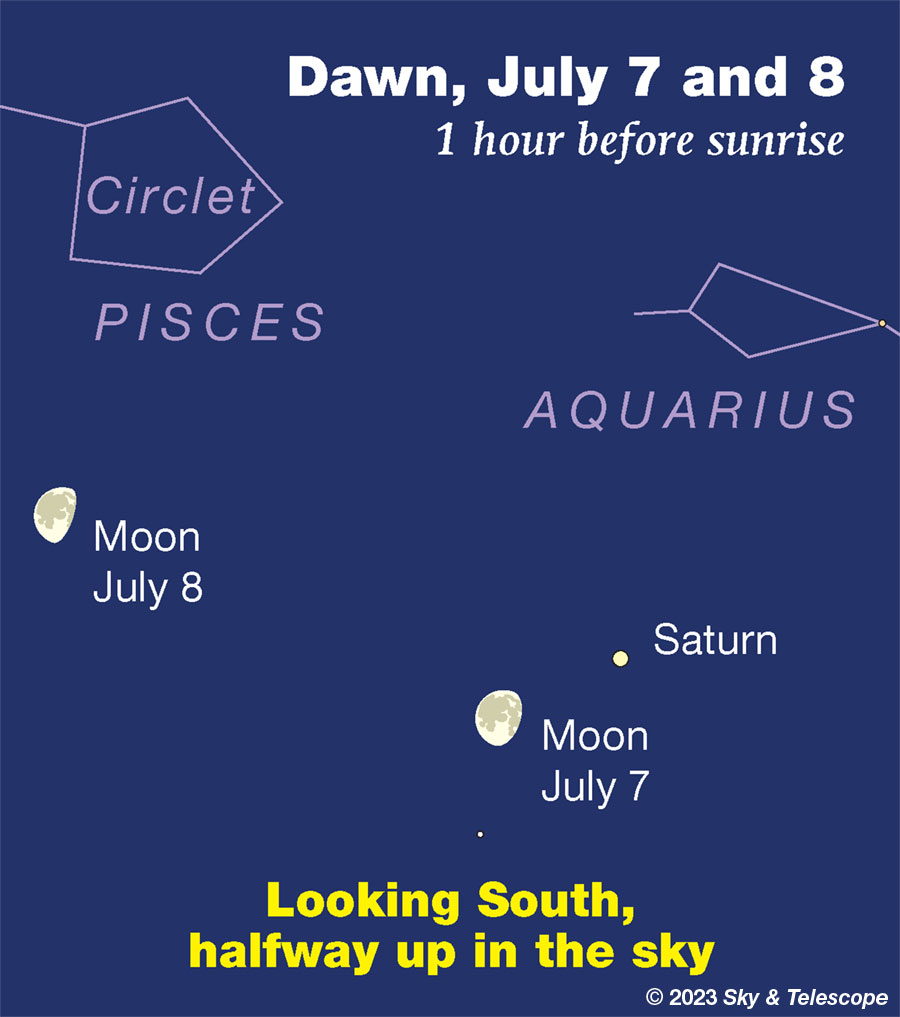
FRIDAY, JULY 7
■ Upper left of Venus in twilight, Mars is now less than 2° from Regulus, which is slightly brighter. See the scene below. Once you've spotted Venus after sunset (or possibly even before sunset), how much longer until you definitely detect the star, then the planet? Regulus is magnitude 1.4, Mars is 1.7, meaning Mars is one-third fainter.1
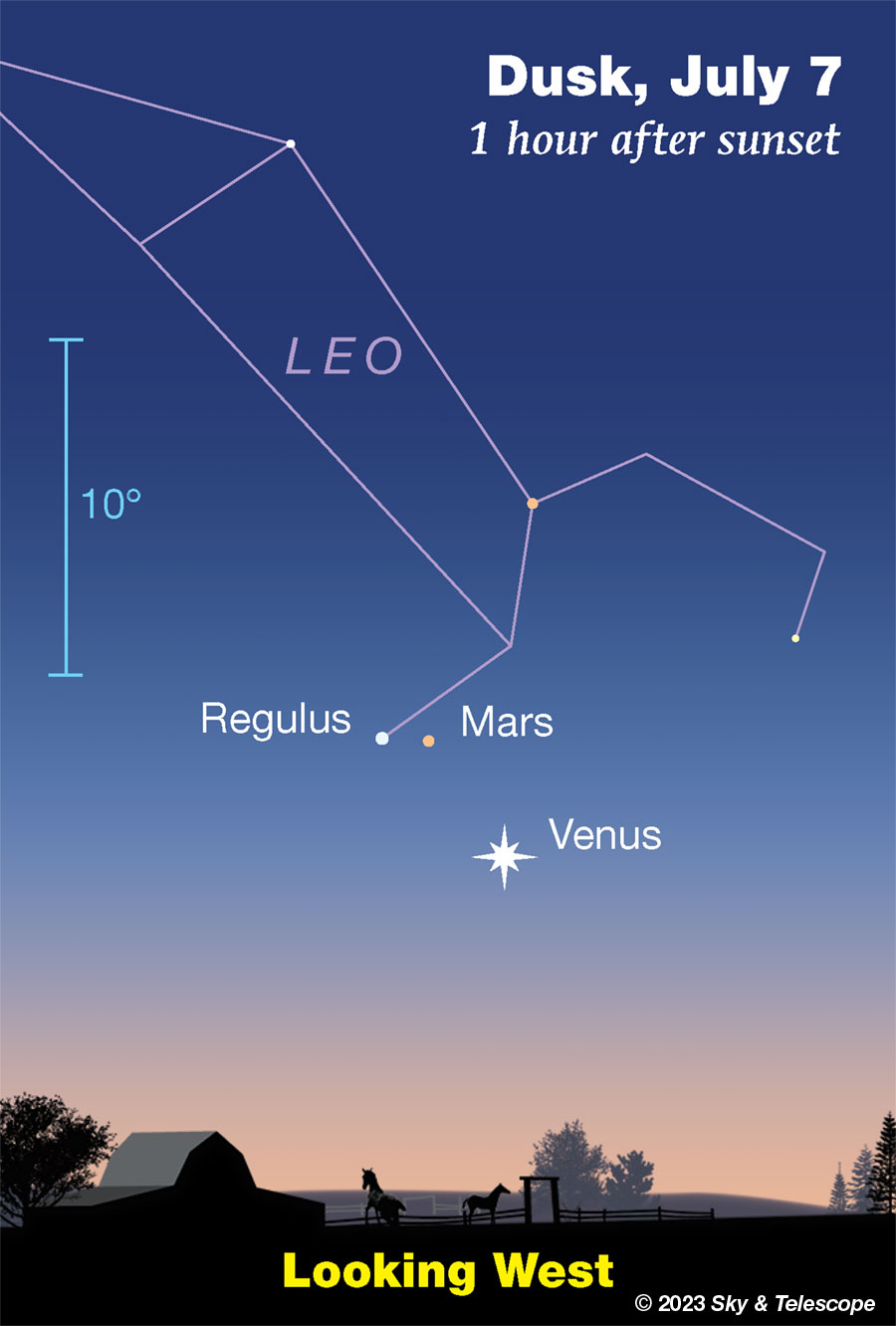
SATURDAY, JULY 8
■ Three doubles at the top of Scorpius. The head of Scorpius — the near-vertical row of three stars upper right of Antares — stands due south right after dark. The top star of the row is Beta Scorpii or Graffias, a fine double star for telescope, separation 13 arcseconds, magnitudes 2.8 and 5.0.
Just 1° below it is the very wide naked-eye pair Omega1 and Omega2 Scorpii, not quite vertical. They're 4th magnitude and a wide ¼° apart. Binoculars show their slight color difference; they're spectral types B9 and G2.
Upper left of Beta by 1.6° is Nu Scorpii, separation 41 arcseconds, magnitudes 3.8 and 6.5. In fact it's a telescopic triple. High power in excellent seeing reveals Nu's brighter component itself to be a close binary, separation 2 arcseconds, magnitudes 4.0 and 5.3, aligned almost north-south.
SUNDAY, JULY 9
■ Mars and Regulus, upper left of Venus, are finally in conjunction this evening and tomorrow evening: 0.7° apart.
This Week's Planet Roundup
Mercury is out of sight in the glare of the Sun.
Venus (magnitude –4.7, in Leo under the Sickle) is the brilliant "Evening Star" in the west during twilight. It's getting lower day by day and sets around twilight's end.
In a telescope Venus is a lovely, dazzling white crescent, thinning and enlarging. It's now about 35 arcseconds from pole to pole and 28% sunlit. Get your telescope on it as early after sunset as you can, or better yet, in the afternoon blue sky when it's higher in steadier seeing. Watch Venus change daily. It will continue to swell in diameter and thin in phase as it drops lower and finally becomes lost from sight in mid- to late July.
Mars (magnitude 1.7, also in Leo) glows weakly 4° to Venus's upper left. They're very gradually beginning to draw apart. Look for Regulus, a bit brighter than Mars, somewhat farther upper left. Mars is moving closer to Regulus every day.
In a telescope Mars is just a tiny little blob 4.2 arcseconds in diameter, since it's on the far side of its orbit from us. And it's a small planet to begin with.
Jupiter (magnitude –2.2, in Aries) rises around 1 or 2 a.m. in the east-northeast. By the beginning of dawn it's shining well up in the east.
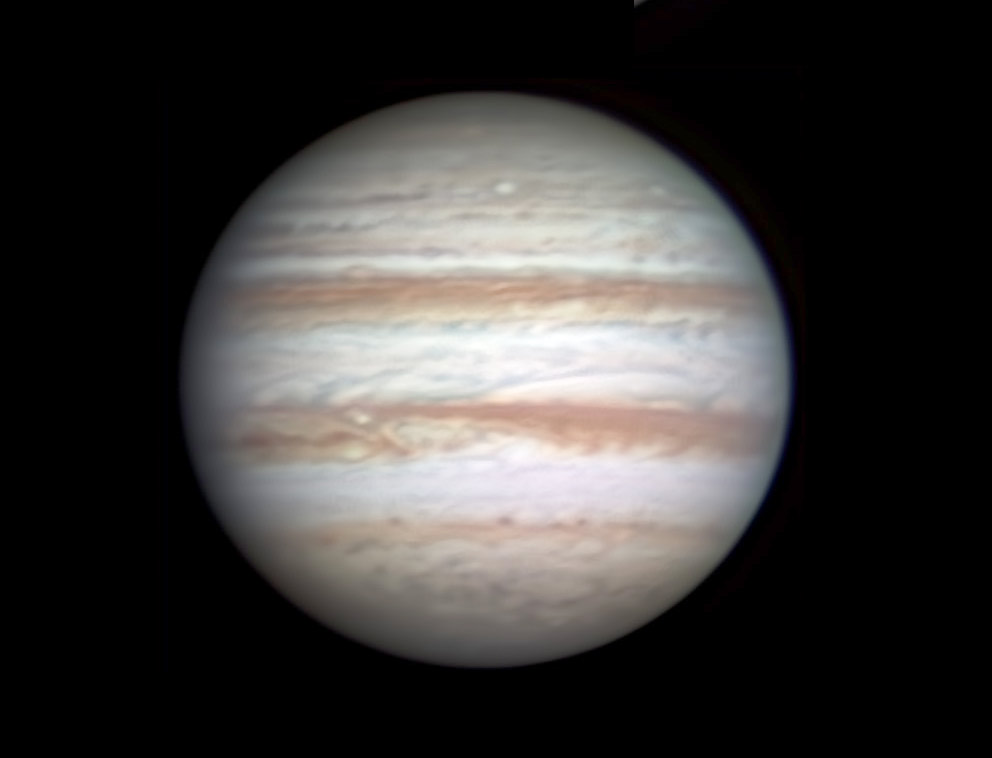
Saturn (magnitude +0.8, in dim Aquarius) rises around 11 p.m. By the beginning of dawn it's at its highest, steadiest telescopic view in the south. The 1st-magnitude star about two fists below it is Fomalhaut.
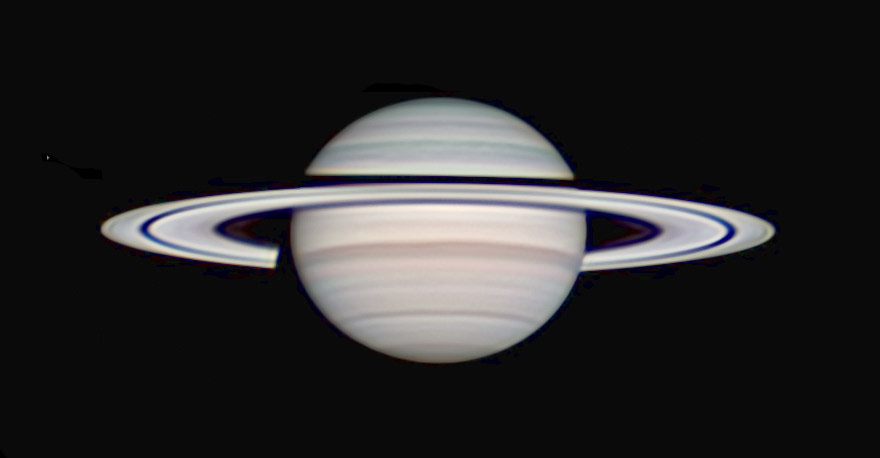
Uranus, magnitude 5.8 in Aries, is in the east-northeast by the beginning of dawn (about 11° lower left of Jupiter).
Neptune, magnitude 7.9 at the Aquarius-Pisces border, is high in the southeast before dawn begins. It's 20° east along the ecliptic from Saturn.
All descriptions that relate to your horizon — including the words up, down, right, and left — are written for the world's mid-northern latitudes. Descriptions and graphics that also depend on longitude (mainly Moon positions) are for North America.
Eastern Daylight Time (EDT) is Universal Time minus 4 hours. UT is sometimes called UTC, GMT, or Z time.
Want to become a better astronomer? Learn your way around the constellations. They're the key to locating everything fainter and deeper to hunt with binoculars or a telescope.
This is an outdoor nature hobby. For a more detailed constellation guide covering the whole evening sky, use the big monthly map in the center of each issue of Sky & Telescope, the essential magazine of astronomy.
Once you get a telescope, to put it to good use you'll need a much more detailed, large-scale sky atlas (set of charts). The basic standard is the Pocket Sky Atlas (in either the original or Jumbo Edition), which shows all stars to magnitude 7.6.

Next up is the larger and deeper Sky Atlas 2000.0, plotting stars to magnitude 8.5; nearly three times as many. The next up, once you know your way around, are the even larger Interstellarum atlas (stars to magnitude 9.5) or Uranometria 2000.0 (stars to mag 9.75). And be sure to read How to Use a Star Chart with a Telescope. It applies just as much to charts on your phone or tablet as to charts on paper.
You'll also want a good deep-sky guidebook. A beloved old classic is the three-volume Burnham's Celestial Handbook. An impressive more modern one is the big Night Sky Observer's Guide set (2+ volumes) by Kepple and Sanner.
Do computerized telescopes replace charts? I don't think they're a good idea for beginners, especially not on mounts and tripods that are less than top-quality mechanically. Unless you would really prefer spending your time getting technology to work rather than getting familiar with the sky. And as Terence Dickinson and Alan Dyer say in their Backyard Astronomer's Guide, "A full appreciation of the universe cannot come without developing the skills to find things in the sky and understanding how the sky works. This knowledge comes only by spending time under the stars with star maps in hand." But do read How to Use a Star Chart with a Telescope.
![]() Audio sky tour. Out under the evening sky with your
Audio sky tour. Out under the evening sky with your
earbuds in place, listen to Kelly Beatty's monthly
podcast tour of the heavens above. It's free.
"The dangers of not thinking clearly are much greater now than ever before. It's not that there's something new in our way of thinking, it's that credulous and confused thinking can be much more lethal in ways it was never before."
— Carl Sagan, 1996
"Facts are stubborn things."
— John Adams, 1770
1. Okay, some of you have asked how to convert a magnitude difference into the true brightness difference. Here we go.
Since 1856, the stellar magnitude system has been precisely defined so that 5 magnitudes is exactly a 100-times difference in brightness. So, one magnitude is a change in brightness of the fifth root of 100. Which is 2.512 for all practical purposes.
Here's the formula to use: If Δm is the magnitude difference, then
the brightness difference = 2.512Δm
...which is just a few taps on your scientific calculator.
 7
7









Comments
misha17
June 30, 2023 at 12:50 pm
Watch the Moon slowly pass very close to Antares tonight (June 30). In 2 months it will actually occult the star as seen from the U.S. east of a line roughly along the Rocky Mountains
(source: https://in-the-sky.org/news.php?id=20230825_16_100).
Unlike tonight's conjunction with a nearly full Moon, the August conjunction will take place with the Moon near its First Quarter phase, and Antares will disappear behind the Moon's dark limb.
You must be logged in to post a comment.
mary beth
July 2, 2023 at 10:44 am
Thanks Misha17! I just watched it on Stellarium. On August 24 between 9 PM and 11 PM or so here in Houston, we will see a partial occultation. It’s on my calendar! Such a great month for stargazing and this adds to the fun!
You must be logged in to post a comment.
Rod
June 30, 2023 at 2:47 pm
I enjoyed some solar observing today, despite the clouds and haze.
Observed 1300-1400 EDT/1700-1800 UT. I observed sunspot active region AR3354 today using 90-mm refractor telescope with glass white light solar filter at 25X, TeleVue 40-mm plossl. This sunspot region easy to see covering nearly 3 arcminutes across. Spaceweather.com reported today: “GIANT SUNSPOT ALERT: When this week began, sunspot AR3354 didn't exist. Now it is 10 times wider than Earth and still growing. The sunspot burst into view on June 27th, breaching the surface of the sun, then blossoming into a giant over the next 48 hours: movie. AR3354 is so big, amateur astronomers can see details normally reserved for the world's greatest telescopes." At the Sun's distance ~ 1.017 AU (Stellarium 23.1), earth size diameter 17.3 arcsecond and my telescope view resolved ~ 12 arcsecond on the Sun. Multiple small and dark cores visible in AR3354. I viewed with passing cumulus, altocumulus, and smoke haze from Canada so not the best conditions. Smoke from Canada this spring and early summer has been a real viewing problem for me.
You must be logged in to post a comment.
mary beth
July 2, 2023 at 5:04 pm
I’m just curious if anyone can tell me the exact date that Cassiopia is the lowest?
You must be logged in to post a comment.
Alan MacRobertPost Author
July 3, 2023 at 4:38 pm
OK, you got me curious. I'm using Starry Night Pro. It shows that if you're looking just after the end of astronomical twilight from latitude 40 degrees north, the center star of the Cas W (Gamma Cas) is lowest due north around June 1st.
The W itself then is still a bit tilted. It's level with the horizon at the end of twilight about three weeks later.
Have you tried playing around with our Interactive Sky Chart on this site? It's at
https://skyandtelescope.org/interactive-sky-chart/
It's more rudimentary but it can show things like this for any location pretty well.
Cheers,
Alan MacRobert
You must be logged in to post a comment.
mary beth
July 3, 2023 at 8:45 pm
Thank you so much! That is certainly earlier than I would have thought! The tilt is interesting. She doesn’t stay low that long, she’s a Queen afterall!
I have not used the interactive sky chart here, but I am going to start. Thank you for the reminder.
Happy Fourth!
You must be logged in to post a comment.
Tony
July 6, 2023 at 9:24 pm
Southern Vancouver Island has not been smoked over as heavily as many other areas, but there's been more haze than I'd like. The evening of July 5 was relatively clear and Venus was easily seen before sunset. With 16x50 binoculars its crescent phase was visible, and half an hour after sunset the color difference between Mars and Regulus was a treat to see. At this time of year I aim for a last look at Castor and Pollux in the evening sky . . . the northwest was a wee hazy and by 9:45 I was ready to give up, but Pollux showed in my trusty binocs.
You must be logged in to post a comment.
You must be logged in to post a comment.